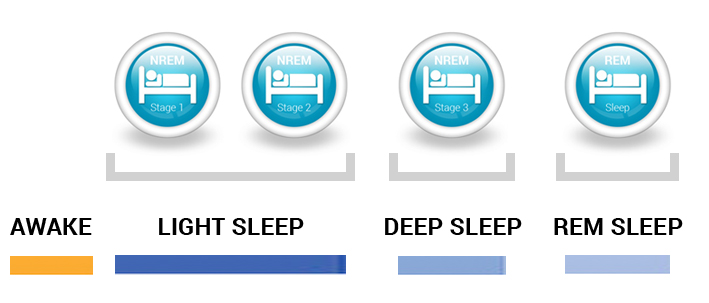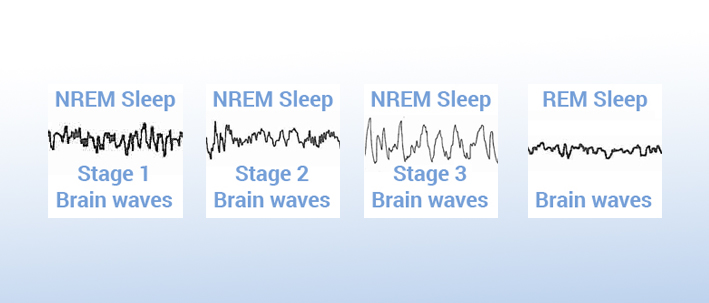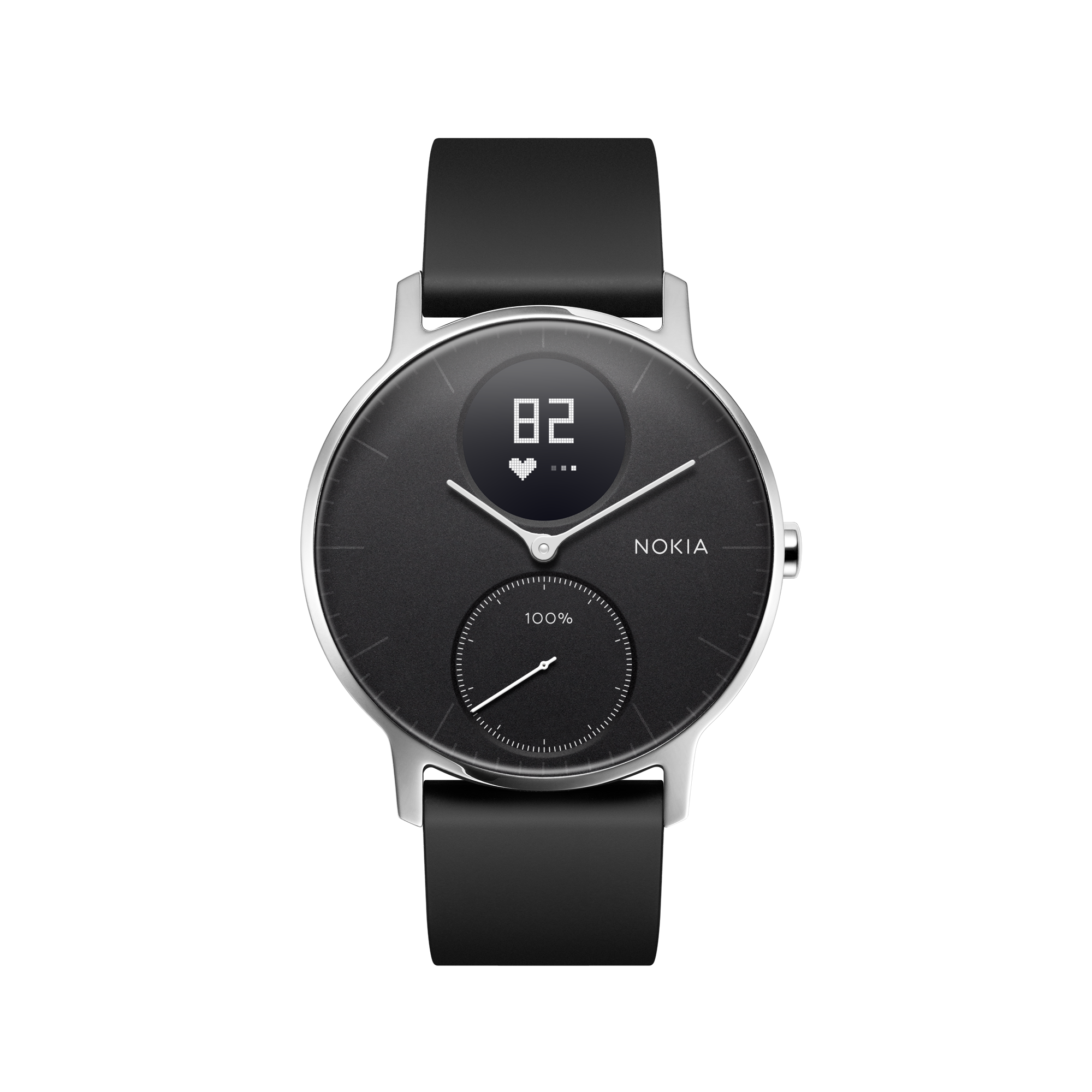
When we sleep at night, we typically go through several sleep cycles. And each one of these cycles consists of 4 different stages of sleep. Let’s go through what differentiates these stages and what we know about each of them.

NREM Stage 1
Stage 1 of non-rapid eye movement sleep (NREM), or dreamless sleep, occurs after you have decided to sleep and your eyes are closed. During this stage—which typically lasts between 1 and 10 minutes—you are lightly asleep, and you can quickly return to being fully awake.
Defining features
- Although you are asleep, you may wake up feeling like you didn’t sleep at all.
- Your body’s muscles are not inhibited yet: your eyes roll a little bit and you may slightly open your eyelids.
- Your breathing slows down and your heartbeat becomes regular.
- Your blood pressure and brain temperature decrease.
- The hypnic jerk we sometimes experience when falling asleep, accompanied or not by the sensation of falling down, happens during this stage. Some say it is a vestigial reflex humans developed during the evolutionary process to prevent them from falling off the trees they slept in.
Did you know?
People with irregular sleeping habits tend to have these hypnic jerks more often.
NREM Stage 2
When NREM Stage 2 sleep kicks in, things get serious!
Defining features
- Stage 2 sleep, which usually lasts about 20 minutes, is characterized by a slowing heart rate and a decrease in body temperature. Your body reduces its activity to prepare you to go into a deep sleep.
- It becomes harder to wake you up.
- Your brain starts to emit larger waves.
- Your blood pressure also decreases, and other metabolic functions slow down too.
- The 2 first stages of NREM Sleep together are often referred to as light sleep.
Did you know?
We spend most of our nights in Stage 2 sleep (around 45% of total sleep duration).
NREM Stage 3
This sleep stage refers to the combined stages of what was previously separated into Stage 3 & 4 sleep.
Defining features
- This stage typically starts 35-45 minutes after falling asleep.
- As electroencephalograms show, our brain waves slow down and become larger.
- At this point, you sleep through most potential sleep disturbances (noises and movements) without showing any reaction.
- If you actually wake up during NREM Stage sleep, there’s a high probability you are going to feel disoriented for the first few minutes.
Did you know?
Other names for this stage include “slow-wave sleep” and “Delta sleep.”
REM Stage 4
This is the final stage of a standard sleep cycle. The first rapid eye movement (REM) sleep stage lasts around 10 minutes and usually happens after having been asleep at least 90 minutes.
Defining features
- As its name indicates, your eyes move rapidly in all directions during Rapid Eye Movement sleep.
- It is during this stage of sleep (the deepest) that powerful dreams usually happen. Same goes for sleepwalking and bedwetting episodes.
- This stage is also characterized by an increase of the heart and respiration rates, and their rhythms may become irregular.
- REM stages typically get longer and longer as the night goes by, and the last REM stage can last an hour.
Did you know?
REM sleep is also known as “paradoxical sleep.” This is because the brain waves emitted during this stage seem contradictory to sleep: Although you are sleeping, your brain waves look at lot like what can be recorded when you are fully awake. Another aspect of this paradox is the fact that even though your brain shows heightened activity, most of your muscles are paralyzed.

The image above shows the different stages of sleep, as they appear when you record your brain waves.
Thanks for reading! Now go on and get in those 8 hours.




